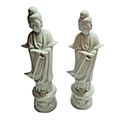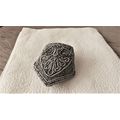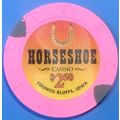Huesca, Spain - Porches Vega Armijo - postcard c.1950s
- Condition : Used
- Dispatch : 2 Days
- Brand : None
- ID# : 122803543
- Quantity : 1 item
- Views : 638
- Location : United Kingdom

- Seller : justthebook (+1704)
- Barcode : None
- Start : Wed 04 Dec 2013 05:58:36 (EDT)
- Close : Run Until Sold
- Remain : Run Until Sold
Checks/Cheques
 for 1 item(s) edit
for 1 item(s) edit
Shipping Calculator
More Listings from This Seller view all
Seller's Description
- Postcard
- Picture / Image: Huesca, North East Spain - Porces Vega Armijo
- Publisher: Darvi, Zaragoza
- Postally used: no - short note
- Stamp: n/a
- Postmark(s): n/a
- Sent to: n/a
- Notes / condition:
Please ask if you need any other information and I will do the best I can to answer.
Image may be low res for illustrative purposes - if you need a higher definition image then please contact me and I may be able to send one.
------------------------------------------------
Postage & Packing:
UK (incl. IOM, CI & BFPO): 99p
Europe: £1.60
Rest of world (inc. USA etc): £2.75
No additional charges for more than one postcard. You can buy as many postcards from me as you like and you will just pay the fee above once. (If buying postcards with other things such as books, please contact or wait for invoice before paying).
Payment Methods:
UK - PayPal, Cheque (from UK bank) or postal order
Outside UK: PayPal ONLY (unless otherwise stated) please. NO non-UK currency checks or money orders (sorry).
NOTE: All postcards are sent in brand new stiffened envelopes which I have bought for the task. These are specially made to protect postcards and you may be able to re-use them. In addition there are other costs to sending so the above charge is not just for the stamp!
I will give a full refund if you are not fully satisfied with the postcard.
----------------------------------------------
Text from the free encyclopedia WIKIPEDIA may appear below to give a little background information (internal links may not work) :
*************
Huesca (Spanish pronunciation: ['weska]; Aragonese: Uesca) is a city in north-eastern Spain, within the autonomous community of Aragon. It is also the capital of the Spanish province of the same name and the comarca of Hoya de Huesca. In 2009 it had a population of 52,059, almost a quarter of the total population of the province. That makes it one of the least populated provincial capitals in Spain.
Huesca celebrates its main festivities Fiestas de San Lorenzo[1] from 9 to 15 August.
Huesca's pre-Roman Iberian name was Bolskan. It was the capital of the Ilergetes, in the north of Hispania Tarraconensis, on the road from Tarraco (modern Tarragona) and Ilerda (modern Lleida) to Caesaraugusta (modern Zaragoza)[2] and fell under Caesaraugusta's jurisdiction. Pliny alone[3] places the Oscenses in Vescitania, a district mentioned nowhere else[4] The city's name was rendered as Osca, and was a Roman colony, Urbs Victrix Osca, during the Roman Empire. Under the impetus of Quintus Sertorius, the renegade Roman and Iberian hero who made Osca his base, the city minted its own coinage and was the site of a prestigious school founded by Sertorius to educate young Iberians in Latin and Romanitas in general. We learn from Plutarch[5] that it was a large town, and the place where Sertorius died. It is probably the town called Ileoscan (??e?s?a?) by Strabo, in an apparently corrupt passage[6] It seems to have possessed silver mines,[7] unless the argentum Oscense here mentioned merely refers to the minted silver of the town.
18th-century Spanish historian Enrique Flórez, however,[8] has pointed out the impossibility of one place supplying such vast quantities of minted silver as we find recorded in ancient writers under the terms argentum Oscense, signatum Oscense; and is of the opinion that ""Oscense"" in these phrases means ""Spanish"", being a corruption of ""Eus-cara"".[9] The fully Romanised city, with its forum in the Cathedral square, was made a municipium by decree of Augustus in 30 BC.
With the Arab conquest in the late 8th century, the city came to be called Wasqah (Arabic: ????), falling within the Tagr al-A'la, the Upper March of the Emirate of Córdoba. It was ruled by a local governor appointed from Córdoba, but was repeatedly subject to political turmoil, rebellion and assassination as the Banu Qasi, Banu Amrus and Banu al-Tawil clans, as well as the Arista dynasty of Pamplona, struggled for control, autonomy or independence from the Emirate, later Caliphate. In the mid-10th century, Wasqah was given to the Banu Tujibi, who governed the Upper March from Zaragoza, and it became part of their Taifa of Zaragoza when in 1018 they successfully freed themselves from the disintegrating Caliphate. In 1094 Sancho Ramirez built the nearby Montearagón castle with the intention of laying siege to Wasqah but was killed by a stray arrow as he was reconnoitring the city's walls. It was conquered in 1096 by Peter I of Aragon.
In 1354, King Peter IV of Aragon chartered the University of Huesca, which initially had a faculty of theology. The school expanded, but by the end of the 16th century was eclipsed by the University of Zaragoza.[10] The university was abolished in 1845.[11]
During the Spanish Civil War (1936–39) the ""Huesca Front"" was the scene of some of the worst fighting between the Republicans and Franco's army. The city was besieged by the Republicans, George Orwell among them (see below) but never fell.
type=real photographic (rp)
theme=topographical: rest of the world
sub-theme=europe
county/ country=spain
number of items=single
period=1945 - present
postage condition=unposted
Listing Information
| Listing Type | Gallery Listing |
| Listing ID# | 122803543 |
| Start Time | Wed 04 Dec 2013 05:58:36 (EDT) |
| Close Time | Run Until Sold |
| Starting Bid | Fixed Price (no bidding) |
| Item Condition | Used |
| Bids | 0 |
| Views | 638 |
| Dispatch Time | 2 Days |
| Quantity | 1 |
| Location | United Kingdom |
| Auto Extend | No |



















